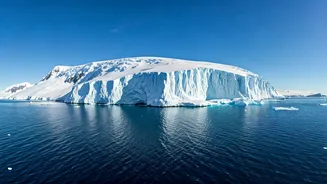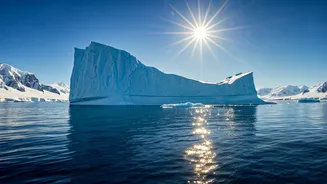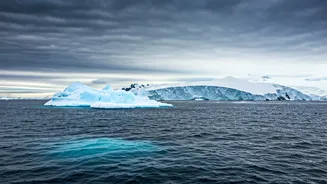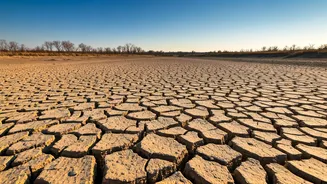Melting Unleashes More
The research unveils the intricate dance of climate feedback. It shows how the initial melting of Antarctic ice instigated further melting, setting off
a chain reaction. This phenomenon is caused by a feedback loop, wherein a small change in one component (like temperature) amplifies the effect on another (like ice loss). The impact is a self-perpetuating cycle of ice melting, which scientists have now observed on a time scale of 9,000 years ago. Understanding these feedback loops is essential to anticipate how the Antarctic ice sheet will react to climate change and what effects this will have on sea levels. It is a critical piece of the puzzle for projecting future sea-level rise and its consequences on coastal communities worldwide. It also suggests that once the process starts, it can be very difficult to stop, with the initial melting essentially opening the door to a much larger problem.
Cascading Effects Detailed
The study carefully dissects the mechanisms behind the cascading effects. When ice melts, it introduces fresh water into the ocean. This alteration changes the water's density and how it circulates, which affects the ocean currents. Changes in currents influence the movement of heat, which can, in turn, increase melting rates and further accelerate ice loss. This phenomenon is not limited to just the interaction between ice and ocean. As ice melts, it also exposes darker land and water surfaces that absorb more solar radiation, which warms the surrounding environment. This creates a positive feedback loop, and these cascading effects can amplify the overall rate of ice loss. The interactions within the Antarctic system are a delicate balance, and this research underscores the significance of understanding each component in this complex web of interactions.
Unveiling Past Events
The study utilized scientific methods and data to reconstruct events from 9,000 years ago. Scientists employed ice core samples, sediment analysis, and climate models to deduce how the ice sheet reacted in the past. Ice cores have provided a record of past atmospheric conditions, showing changes in temperature and greenhouse gas concentrations. By analyzing the composition of sediments from the ocean floor, researchers reconstructed shifts in ice sheet size and melting rates. These different data sets were integrated into sophisticated climate models, which simulated the complex interactions among the ice sheet, the ocean, and the atmosphere. By comparing these simulations with the evidence from ice cores and sediment analysis, scientists were able to unravel the sequence of events and the feedback mechanisms that led to the ice sheet's accelerated melting. The study shows the incredible scientific effort needed to understand our planet’s past.
Sea Level Impact
The research serves as a cautionary tale. It is crucial to underscore how the Antarctic ice sheet’s stability and its future melting can affect global sea levels. The study suggests how even a comparatively small amount of ice loss can trigger significant sea-level rise. The Antarctic ice sheet stores a massive quantity of water. If all of this ice were to melt, it would lead to a devastating rise in global sea levels, putting coastal areas and low-lying regions at serious risk. Moreover, even partial melting can have dramatic effects. The gradual addition of meltwater to the oceans can influence ocean currents and alter coastal ecosystems. This research serves as a reminder of the need for immediate action and mitigation strategies to reduce carbon emissions and slow down the rate of ice melt. The effects extend beyond physical inundation, influencing infrastructure and human populations.
Implications For Today
This study has critical implications for present-day climate action and the future. By illustrating the sensitivity of the Antarctic ice sheet to environmental change, the research amplifies the urgency of current climate mitigation efforts. The findings help us to understand how climate feedback loops can accelerate the rate of ice loss, even beyond what models may predict. The study provides additional reasoning to push for reduced greenhouse gas emissions, helping to avoid triggering these dangerous feedback loops. It emphasizes the need for proactive policies to safeguard vulnerable coastal regions. These conclusions call for continued research into the behaviour of the Antarctic ice sheet and its responses to climate change, enabling more accurate projections and more effective preparation strategies. These actions are a critical investment to protect both our planet and future generations.













